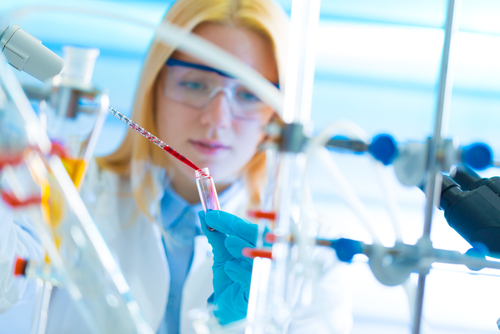New Strategy Developed at UCLA Generates Functional Muscle Cells from Stem Cells in DMD Mice

UCLA researchers have developed a new method to efficiently produce and transplant functional skeletal muscle cells from human pluripotent stem cells (hPSCs). This may offer new therapeutic opportunities for patients who have muscle diseases such as Duchenne muscular dystrophy (DMD).
The findings were reported in an article titled “ERBB3 and NGFR mark a distinct skeletal muscle progenitor cell in human development and hPSCs” that appeared in the journal Nature Cell Biology.
Pluripotent stem cells are immature cells that have the potential to become virtually any cell type that we have in our bodies. This maturation process is tightly regulated, requiring very specific external stimulus at a certain time to make a particular type of cell.
Because of their great potential, the transplanting of hPSCs has been explored as a therapeutic option for a broad range of diseases. For muscular dystrophies, hPSCs represent a potential source of mature muscle cells to replace those that are deficient or lacking.
A research team led by April Pyle, associate professor of microbiology, immunology, and molecular genetics, and a member of the Eli and Edythe Broad Center of Regenerative Medicine and Stem Cell Research at UCLA, tested existing protocols for hPSC maturation and found they would give rise to muscle cells that were only partially functional compared to healthy, natural muscle cells.
“We have found that just because a skeletal muscle cell produced in the lab expresses muscle markers, doesn’t mean it is fully functional,” Pyle said in a news release.
To better understand the difference between hPSC-derived cells and natural muscle cells, the team conducted a comparative genetic profile analysis. With this strategy they found that two cell surface receptors (ERBB3 and NGFR) were found only in functional muscle cells, including in human natural muscle cell progenitors.
By using the hPSC maturation process, the team could specifically select and isolate hPSC-derived muscle cells that had the two surface markers. These cells were found to have improved efficiency in forming functional muscle fibers, but they still showed some traits that were different from those shown by natural muscle cells.
An additional genetic analysis revealed that the TGF-β signaling pathway was preventing the full maturation of hPSC-derived muscle cells.
To evaluate the therapeutic potential of these cells, the team used their optimized maturation protocol on hPSCs collected from a Duchenne MD patient. The cells had been manipulated using the CRISPR-Cas9 gene-editing technology to produce dystrophin – the protein that is lacking in Duchenne patients. The selected cells were then transplanted into mice that lacked dystrophin along with a TGF-β inhibitor.
With the combined therapeutic strategy, the transplanted cells efficiently developed into mature functional muscle cells. The hPSC-derived cells also showed increased levels of dystrophin protein near the levels to those found in healthy human muscle cells.
“The results were exactly what we’d hoped for,” Pyle said. “This is the first study to demonstrate that functional muscle cells can be created in a laboratory and restore dystrophin in animal models of Duchenne using the human development process as a guide.”
The team is planning to explore their hPSC isolation and maturation strategy to generate muscle cells that can provide long-term protection from injury.
“Furthering our understanding of human developmental myogenesis [muscle cell formation] will provide inroads to regenerative approaches for muscle diseases, including in combination with gene-edited patient-derived hPSCs,” the researchers wrote in the study.






